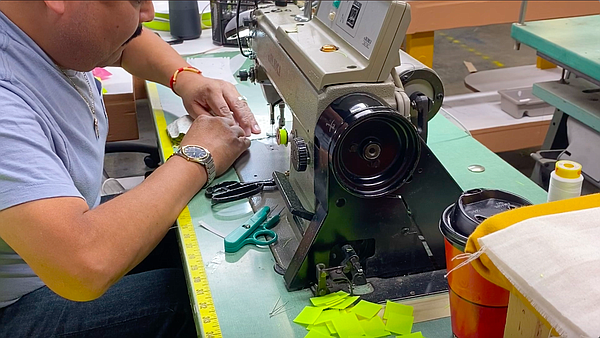TECHNOLOGY
Apparel-Technology Companies Make Connections to Support PPE Production
As clothing manufacturers, brands and designers create personal protective equipment for medical workers during the continued global efforts to combat COVID-19, apparel-technology firms are facilitating production of masks, gloves, gowns and footwear covers.
The Tolland, Conn.–based Gerber Technology has experience in the PPE space with a network of 300 customers in the category. Though Gerber started its COVID-19 work in January to support emergency services in China, it eventually expanded to fortify efforts in Europe and the United States. The company has worked with makers of PPE goods for years, according to Vice President of MarketingKetty Pillet.
“This is a process we already know. We have the expertise and have worked with those people for many years,” she said. “Now, a lot of fashion companies with the capacity to cut and sew switched their products to produce more medical equipment.”
In early March, the Gerber PPE Task Force and Resource Team was formed to facilitate matchmaking in order to connect brands with the resources and partners needed to help during the fight against the coronavirus.
“When we saw it spread in Europe and the U.S., those companies came to us, and we said that we would create a task force to share what we have,” Pillet said. “We have a resource page where we offer free of charge the patterns, the tech packs and the guidelines.”
In addition to its supply-chain-management software, Suuchi Inc., headquartered in Carlstadt, N.J., has a team of internal sewers. The company is working with representatives from state and government offices in addition to hospitals and healthcare providers, according to Lizzie Sessa, senior manager of content and product marketing.
“When we got the green light from the state that we were an essential business, we knew that we needed to take action,” she explained. “Everything is really needed but the biggest request is for the N95 mask and surgical masks and gowns are a very close second.”
One of Suuchi’s partners, Shannon Lohr, who is the founder of Boston’s Factory 45—the online accelerator for sustainable fashion brands—became interested in helping after seeing stories of home sewers creating masks.
“I was happy people were donating their time and doing it that way, but they are making a hundred masks a week if that,” she said. “We need a mass supply of masks. Through Factory 45 and my program I have all of these personal connections with American factories.”
Inspired to assist, Lehr launched Requestmasks.com, a resource for factories that wanted to create masks and the hospitals that needed them. On the site, Lohr also shared a mask pattern from the Good Clothing Company and an instructional video, which allows anyone to help. At press time, the site had seen 900 hospital requests for masks and offers from 300 American factories.
“JoAnn Fabrics very generously contacted me saying they wanted to donate fabric and asked if I could connect them with my factory partners in the U.S. Suuchi was one of those factories that came to mind,” Lohr explained. “I reached out to them and had 300 to 500 yards of fabric donated to them. They will be able to make about 12,000 to 15,000 masks.”
Once the pandemic slows and technology advances further, these businesses will be better prepared for the next emergency through their experiences during this time.
“Most of those companies are not considered essential businesses if they produce garments,” Pillet said. “When they start to produce the medical equimpent, they are helping and becoming essential businesses, allowing them to remain open and survive beyond these days.”
Another lesson learned from working during the time of COVID-19, according to Sessa, is the need for brands to expand their supply chains.
“We are making sure we are keeping those resources open to the companies and people that need them, but informing brands to understand that the impact this had is not something we could have been prepared for,” she said. “It’s showing a deeper issue of supply-chain challenges, including concentration in one area.”






















